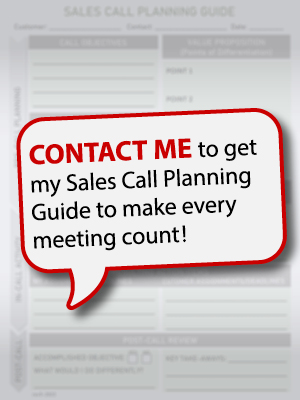The success of your business depends on how well you engage with your customers. If you want to ensure that your sales team is delivering the best customer experience possible, investing notable time in sales coaching is essential.
Unlike sales training, sales coaching is evaluating and mentoring one-to-one to improve an individual’s performance and drive consistent success. Sales Coaching isn’t an event; it’s an ongoing core function of sales leadership.
In the B2B outside sales world, sales coaching has traditionally occurred through “ride-along” days, consisting of a sales leader meeting up with the salesperson in their territory. They’d ride along for the day and attend a series of prospect and customer meetings.
In today’s business environment, technology has expanded the opportunity of sales coaching far beyond the traditional ride-along day.
Continue reading this article to gain tips and advice on:
- Various methods to create live sales coaching opportunities
- How to get the most out of “ride-along” time – including a FREE Call Planning Guide!
- What an effective customer meeting debrief looks like
Modern Day “Sales Ride-Along” Methods
Today, what we used to only be able to achieve by getting in the car for the day with a salesperson can be accomplished in a variety of ways – and in way less time!
The key for sales managers is to routinely invest time interacting with their sellers in various live customer settings. This enables you to identify where additional sales coaching is needed, hear the obstacles salespeople are navigating first-hand, and recognize when front-line reps need stronger product offerings or additional sales tools in order to compete.
As I explained in a previous article, “Reveal Your Sales Skill Gaps with the Customer Journey”, these are also ideal opportunities to identify new areas to feed into your sellers’ individual development plans.
Let’s look at the different ways we can partner with our salespeople in their day-to-day selling activities…
In-Person Customer Meetings
While the sales ride-along term is dated, the benefits of accompanying your salespeople in in-person customer settings remain a constructive development activity.

It’s a productive method to help identify and bridge skill gaps, improve customer engagement, and give you real-time insights into how customers perceive both your company and the sales reps you have assigned to their accounts.
It also is a great opportunity to validate your sales messaging and demonstrate to customers and your sellers that you’re investing in their success.
Virtual Customer Meetings
In recent years, I’ve seen the scales tip in many sales environments, with more prospect and customer interaction occurring through video interface than in-person.
This opens up an entirely new opportunity to engage with your salespeople in their live customer settings!

Not only can you bring the same value I described for in-person meetings, but most sellers still need help evolving into strong video call facilitators.
This can be achieved by using online tools to create engagement such as virtual whiteboard activities, polling, chat, streaming, and others.
As their sales leader, you need to pave the way for teaching sellers how to run effective virtual meetings.
If this is new territory for you too, don’t hesitate to contact me. I work in several video platforms and understand what you need for effective virtual selling from both a technology and presentation skill standpoint.
Done right, I’ve seen video call discussions become even more productive than in-person settings depending on the number of participants and what stage the customer is at in their customer journey.
Telesales Activity
No matter the sales role, all our salespeople need to be strong performers when it comes to phone communication. This can include prospecting activity, relationship nurturing, negotiating to close a deal, and handling crucial conversations when things get off track.

With today’s technology, there are unobtrusive methods to tie into your seller’s calls to observe them in real-time.
A recorded call can work, but you should ensure that it is a random sample of a conversation and not a great call picked by your salesperson.
It’s important to be open with your reps that call monitoring is part of your sales coaching practice. Many tell me they prefer not to know when I’m listening, so they don’t psyche themselves out.
In exchange, sales managers owe their salespeople helpful coaching and role modeling due to the improvement opportunities identified through call monitoring.
I commonly find this to be a low-hanging fruit to drive sales improvement. Moreover, it can be easily worked into your schedule in small block segments.
Maximizing Sales Ride-Along Time
To maximize in-person, video, or phone customer meeting ride-alongs, the salesperson must prepare in advance.
This ensures each party understands their role and the objectives for the meeting so they can engage cohesively.
Regardless of the customer’s funnel stage, some forethought is needed to create a rewarding engagement experience.

Did you know 75% of buyers are unimpressed by sellers’ ability to navigate their concerns, needs, and wants?
And… that buyers awarded business 2.5 times more often to sellers who demonstrated these skills?
SOURCE: “What Sales Winners Do Differently”, RAIN Group Center for Sales Research
Help your salespeople become exceptional by providing them with sales tools to organize their approach.
I’ve boiled it down to 8 call planning elements that universally apply to any customer meeting and created a free guide for you to use. The single-page guide covers activities from pre-call planning to in-call activity and post-call follow-up actions.
Click Here to request my FREE Sales Call Planning Guide.
When I partner with salespeople for customer meetings, it works well for them to populate the Sales Call Planning Guide and share it with me ahead of time.
This way, we can quickly sync on details when we connect for our final prep conversation. It also creates a great platform for sales coaching.
Over time, these pre-call coaching exercises result in the seller’s planning skills becoming robust and autonomous.
After the meeting is done, the success of your sales ride-along time investment lies in your debrief process. Here’s the approach I take…
Key Points to Cover During Meeting Ride-Along Debrief:
- Ask your rep to walk you through what they felt went well.
- Did they achieve the objectives outlined in their call plan?
- Ask the rep to identify one or two things that they felt could have gone better.
- If your perception of the meeting was different, help rep learn through your insights.
- Recap next steps to progress customer and coach as necessary to optimize.
It’s important your salespeople don’t feel scrutinized during your ride-along time with them. You are there to help them achieve better results. You’re there to bring them value. Ultimately, you want your sellers to see ride-alongs as an opportunity they look forward to.
Creating Time For “Sales Ride-Alongs” Pays Off Ten-Fold!
If you find it easy to grasp the value of investing more time coaching your salespeople but simply don’t have the time, the business case is evident to seek out solutions.
Check out a previous article I wrote to learn more about how my role could lend a hand. Click here to access, “Can Fractional Sales Leadership Help Me Get Ahead?”.
Of course, please also feel welcome to contact me directly if you’d like to talk through your specific sales growth objectives by using any of these methods:
———————————————————————————–
I am part of a national group of Senior Sales Leaders who collaborate to share insights like the examples shown in this article. We formed because of our shared passion to help business leaders exponentially grow their revenue.


